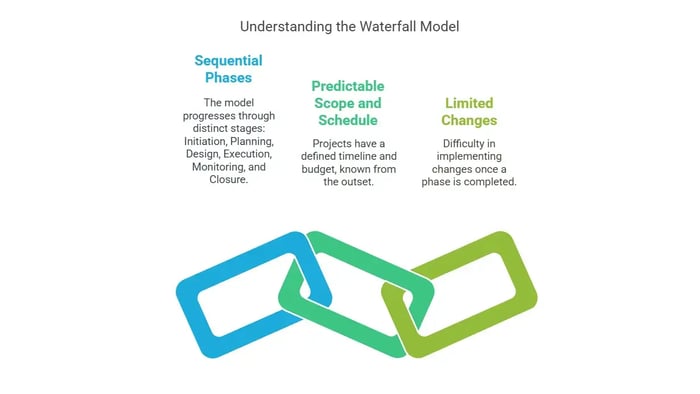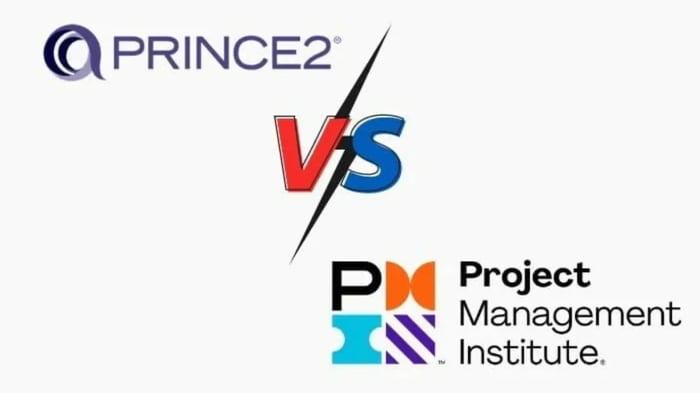Table of Contents
- Introduction to Project Management Methodologies
- Key Differences Between Agile and Waterfall
- When to Use Agile Project Management vs Waterfall?
- Pros and Cons of Agile Project Management vs Waterfall
- 10 Less-Known Facts About Agile Project Management vs Waterfall
- Agile Project Management vs Waterfall: Real-World Applications
- Final Thoughts
- FAQs
In the world of project management, the battle between Agile project management vs Waterfall is like the epic showdown between your favorite sports teams. One team is fast, flexible, and can change on the fly, while the other is steady, structured, and always knows exactly where it's headed. So, which one should you pick for your next big project? Well, let's dive in and break it down with a comprehensive comparison! Whether you're a student, a professional aiming to upgrade your skills, or someone looking to embark on a new career path, understanding the nuances of Agile Project Management and Waterfall Project Management is crucial. And if you're still wondering whether you should pursue a project management certification, stick around as we also discuss which certification will help you in mastering these methodologies.

Introduction to Project Management Methodologies
Picture this: You’re in the middle of a project, and you realize something’s not working. You could either stick to your rigid plan and power through (that’s Waterfall), or pivot and adapt your approach as you go (that’s Agile). These two methodologies each have their distinct approach to managing projects, and knowing when to apply them can make or break a project’s success.
Let’s dig deeper into these two heavyweights of project management—Agile and Waterfall—and see which one is the best fit for your needs!
What is Waterfall Project Management?
Waterfall project management is the old-school, step-by-step process where you follow a linear approach to project development. This means that each phase of the project is completed before moving on to the next. There’s no going back once you’ve completed a phase (hence the "waterfall" analogy). It's like following a recipe without improvising!
Key Features of Waterfall:

- Sequential Phases: Initiation, Planning, Design, Execution, Monitoring, and Closure.
- Predictable Scope and Schedule: Everything is mapped out upfront, so you know exactly when the project will finish and how much it will cost.
- Limited Changes: Once a phase is completed, changes are difficult to implement without disrupting the project.
Ideal for: Projects with well-defined requirements and little chance for changes, like construction or manufacturing projects.
What is Agile Project Management?
Agile project management is all about flexibility and adaptability. Instead of following a strict sequence of steps, Agile breaks down the project into smaller, manageable chunks (known as "sprints"). At the end of each sprint, the project is reviewed, and adjustments are made for the next sprint based on feedback.
Key Features of Agile:

- Iterative Process: Work is done in short cycles, allowing for frequent adjustments.
- Collaboration: Team members, stakeholders, and customers are continuously involved to ensure the project aligns with expectations.
- Flexibility: Agile encourages changes, even late in the process, which is perfect for projects with evolving requirements.
Ideal for: Projects that are subject to change, like software development or digital marketing campaigns. If you're considering the financial aspect of pursuing an Agile certification, you might want to explore the full breakdown of costs in our detailed guide on Agile Project Management Certification Cost.
Key Differences Between Agile and Waterfall
| Feature | Waterfall | Agile |
|---|---|---|
| Approach | Sequential and linear | Iterative and flexible |
| Project Phases | Defined upfront, rigid | Can evolve throughout the project |
| Requirements | Fixed at the beginning | Evolving and adaptable |
| Risk Management | Identified early, difficult to change | Continuous risk assessment and adjustment |
| Customer Feedback | Limited to end of the project | Ongoing, with feedback after each sprint |
| Documentation | Extensive documentation | Less documentation, more collaboration |
| Best For | Predictable, low-change projects | High-change, evolving projects |
When to Use Agile Project Management vs Waterfall?
Both methodologies have their time and place, and choosing the right one depends on your project’s nature.
Use Waterfall When:
- Your project’s requirements are clearly defined and unlikely to change.
- You have a fixed timeline and budget.
- You need a clear, structured approach where each stage depends on the completion of the previous one.
Use Agile When:
- Your project’s requirements are likely to evolve or are unclear at the beginning.
- You need continuous customer feedback and collaboration.
- You want the flexibility to adapt as you move forward.
Pros and Cons of Agile Project Management vs Waterfall

Pros of Waterfall:
- Clear Structure: With all requirements up front, everyone knows exactly what to expect.
- Easy to Manage: Since phases are defined, it's easier to manage time and resources.
- Predictability: The schedule and cost are more predictable from the start.
Cons of Waterfall:
- Inflexibility: Once a phase is completed, it’s hard to go back and make changes.
- Late Problem Discovery: Issues are often not discovered until later in the project, which can lead to delays or rework.
Pros of Agile:
- Flexibility: Agile allows for frequent changes and updates based on feedback.
- Customer Satisfaction: Frequent reviews ensure the project aligns with customer needs.
- Faster Time to Market: Short sprints mean parts of the project can be delivered sooner.
Cons of Agile:
- Requires High Collaboration: Agile requires constant communication and collaboration, which can be time-consuming.
- Hard to Predict: With frequent changes, it can be difficult to predict the project’s timeline and cost accurately.
Wondering what career opportunities await after obtaining a project management certification? Check out our post on Jobs with Project Management Certification to discover various roles you can pursue.
10 Less-Known Facts About Agile Project Management vs Waterfall
- Waterfall's roots trace back to the 1950s when it was first used in construction and manufacturing projects.
- Agile was born from software developers who were frustrated by Waterfall's rigidity in the early 2000s. Agile Manifesto.
- Waterfall’s linear approach makes it unsuitable for projects that require constant innovation. Waterfall Methodology.
- Agile’s flexibility allows for better risk management due to its ability to pivot based on feedback.
- Waterfall is more predictable, which is a key reason why it’s used in industries like construction, where changes mid-project could be costly.
- Agile can help reduce project failure rates by keeping projects aligned with customer expectations and allowing early identification of problems.
- Waterfall often requires more documentation than Agile, making it less efficient in projects with tight timelines.
- Agile uses Scrum or Kanban for management, which are frameworks within Agile that further enhance project flexibility. Scrum Framework.
- The Waterfall model is sometimes called the "traditional" approach, while Agile is seen as "modern" project management.
- Agile can be used for non-software projects, including marketing, operations, and product development.
Agile Project Management vs Waterfall: Real-World Applications
Both methodologies have been successfully used across various industries. Here's a quick rundown:
Waterfall in Action:
- Construction Projects: Where precise planning and a clear final product are essential.
- Manufacturing: Production lines that require strict adherence to schedules and specifications.
Agile in Action:
- Software Development: Agile is ideal for coding and application development, where customer feedback is key.
- Marketing Campaigns: Agile allows marketers to adjust their strategies based on performance metrics and customer responses.
Final Thoughts
If you're looking to master either Agile or Waterfall project management, obtaining a certification from APMIC can help you stand out. APMIC offers the best project management certifications that are globally recognized and highly respected in the industry. Whether you're new to project management or looking to advance your skills, APMIC’s certifications can provide you with the necessary tools to succeed in both Agile and Waterfall environments.
Ready to level up your project management skills? Check out the APMIC Certification Page to get started today!
FAQs
What is the main difference between Agile and Waterfall?
Agile is flexible and iterative, while Waterfall is linear and rigid. Agile allows for ongoing changes, whereas Waterfall follows a set path from start to finish.
Which methodology is better for software development?
Agile is typically better suited for software development because it allows for flexibility and frequent updates based on user feedback.
Can Waterfall be used in IT projects?
Yes, but it’s more suited to projects with fixed requirements and little scope for changes, which is often not the case in IT projects.
What industries use Agile and Waterfall?
Waterfall is commonly used in construction, manufacturing, and large infrastructure projects, while Agile is widely used in software development, marketing, and product management.
Can Agile be applied to non-software projects?
Yes, Agile is increasingly being used in non-software industries like marketing and operations, where flexibility and collaboration are key.
Which is cheaper: Agile or Waterfall?
Agile can be more cost-effective because it allows for early problem detection and continuous improvements throughout the project.
How do Agile teams handle changes during the project?
Agile teams adapt to changes by working in short sprints, with regular reviews and adjustments based on feedback.
Is APMIC's certification valuable for career growth?
Absolutely! APMIC's project management certification is recognized globally and can significantly boost your career prospects.





